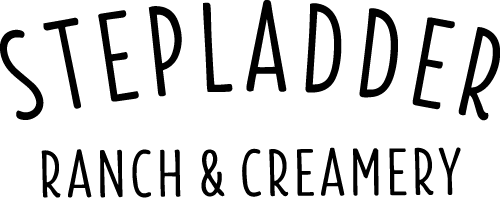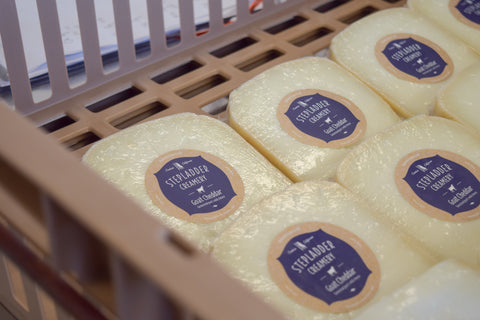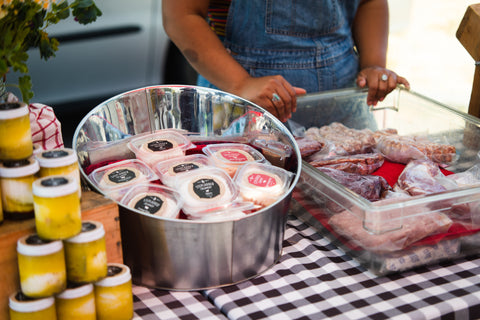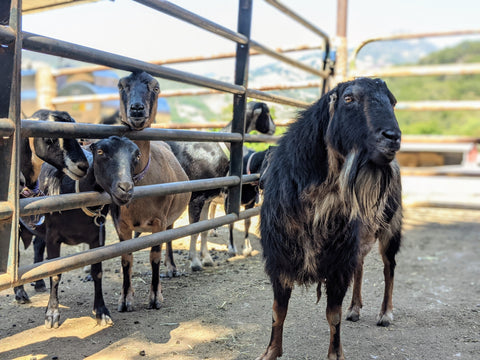We're excited to announce the release of Clothbound Goat Cheddar. This cheese is made in the traditional English Cheddar style with 100% farmstead goat's milk and aged for 12-months in our cheese caves.

About the Cheddar Style:
Did you know this beloved cheese style originated in the English village of Cheddar in Somerset? It's traditionally made with cow's milk and is relatively hard and off-white or orange in color. According to our friends at Wikipedia, Cheddar is the most popular type of cheese in the UK and second-most in the US behind mozzarella.
What makes Cheddar cheese unique is the additional step in the cheesemaking process called cheddaring.
Cheddaring is what happens when the curd is kneaded with salt, cut into cubes to drain the whey and then stacked and turned. The cubes form into a more singular form resembling the delicious cheese curds people know and love. Every squeaky bite is amazing, and gets us excited to try the final aged product when ready!

Pictured above is curd being milled by hand in our Creamery. The slabs are put through the mill and out comes small pieces of curd to then be formed into the moulds. The curds are salty, squeaky and delicious!
Our Clothbound Goat Cheddar is even more special since it's made with 100% goat's milk from our amazing herd of LaMancha dairy goats so it has all the tried and true characteristics of Cheddar with the brightness and flavor of goat's milk.

For a stronger, extra-mature variation of Cheddar, we decided to age the cheese for 12 months. We mill and salt the curds before binding the cheese in muslin and putting it away for 12 months to let it mature to perfection.
Muslin is a cotton fabric we use to hand-bind the cheese wheels. We do this to limit the moisture loss and form a hard rind, better protecting the aging wheels. They are also sealed in an edible wax to stick the cloth onto the cheese.

Here's a photo of several wheels fresh out of the cheese caves bound in the Muslin cloth and wax seal. They look almost mummified!

When the cheese is done aging in our cheese caves, it's time to remove the muslin cloth wrapping. After 12-months of aging, the cloth creates a hard shell seal or casing around cheese wheels. Without the help of a knife or sharp object it's very challenging the remove the cloth.
Pictured above is Cheesemaker Robin removing the cloth from cheese wheels before the wheels are cut into delicious pieces. The cloth is not edible itself, so we make sure to remove it entirely before being cut and packaged.
"We wrap it in traditional cotton muslin and wax it to the rind of the cheese seven days after we make it," said Robin. "The cheese is then rewaxed six months later because we use an edible non plastic wax that allows the cheese to breath and that our natural cave flora can consume while still helping to retain moisture during aging."





